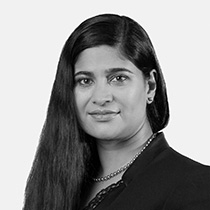PERFORMANCE
Global equity markets posted a strong start to the year, with the MSCI ACWI returning 8% in Q1-24. The performance was broad-based across developed markets, with the S&P 500 Index up 11%, the Dow Jones Euro Stoxx 50 up 10% and Japan’s Nikkei 225 rising 21%, finally surpassing its previous high (in 1989!).
Much of this performance has been driven by the growing conviction that the US economy will achieve a soft landing despite an extremely sharp 525 basis points rise in the fed funds rate over 18 months. Economic growth remains strong, unemployment is remarkably low, and inflation has moderated from a peak in the high single digits in 2022 to the low three percents, albeit above the US Federal Reserve’s 2% target. While expectations for the extent and timing of rate cuts have moderated, absent any unforeseen shocks, it seems clear that the next move in rates is down.
Emerging markets fared less well, returning 2% for the quarter. Much of the attention is focused on weak economic growth in China, which has disappointed since its reopening after Covid lockdowns due to high debt levels and a distressed property market. Global bond markets returned -2% for the quarter, lagging equities as yields rose from their recent lows at the end of December 2023.
South Africa faces ongoing challenges as the key enablers of a functioning economy continue to falter – power, ports and logistics and, increasingly, water infrastructure. This backdrop was reflected in local market returns: the FTSE/JSE Capped SWIX Index was down -2% for the quarter (with domestic-facing sectors such as banks and retailers declining by more), and the FTSE/JSE All Bond Index -2%, despite high attractive real yields on offer. The rand lost 2% against the US dollar over the quarter.
The Fund returned 2.2% for the quarter and 11.7% over the past 12 months, comfortably ahead of the CPI + 3% target. Positive real returns have been generated over all meaningful longer-term periods, and returns are in excess of the Fund's return target over 15 years and since inception.
PORTFOLIO ACTIONS AND FUND POSITIONING
The Fund continues to benefit from a high weighting in global assets, particularly global equities. At the quarter end, gross exposure to global assets was sitting slightly above 40%. We consider a weighting in global assets that is close to the permissible maximum a prudent allocation of investor capital. This is simply because of the much greater choice on offer in global markets, allowing diversification away from the idiosyncratic risks of exposure to the SA economy. However, we are cognisant of the potential volatility introduced by currency movements to rand investors, so a portion of this exposure (currently c.3%) is locked by making use of currency futures. While we continue to see attractive stock picking opportunities in the global universe, we are mindful of the strong performance of these markets over the past six months in particular and retain 30% put protection over this portion of the portfolio. In addition to global equity exposure, we continue to hold a global fixed income position consisting of a basket of high-quality global credits as well as both long- and short-dated US Treasuries offering what we consider to be attractive yields.
Exposure to domestic assets detracted slightly from returns for the quarter, although good instrument selection resulted in both SA equities and bonds outperforming their respective benchmark indices. Over the past 12 months, the contribution from domestic assets has been far more meaningful. Real yields on SA government bonds continue to look attractive, but as always, we remain aware of the fiscal challenges faced by the National Treasury and the longer-term risks to debt sustainability. For this reason, we continue to limit the duration of the domestic fixed income portion of the portfolio and include meaningful exposure to both corporate credit and inflation-linked bonds, which should provide some protection in a low-road/high-inflation scenario.
During the quarter, we made no significant changes to asset allocation. However, exposure to global assets (both equities and fixed income) increased in large part due to relative price and currency moves.
OUTLOOK
While the anticipated declining rate cycle in developed markets should be supportive of asset prices, we are mindful of the strong run in equity markets over the past six months and the high valuations implied in headline index levels. Geopolitical tensions remain high in both Ukraine and the Middle East – perhaps reflected in gold trading at an all-time high of around $2 300/oz (at the time of writing). Domestically, the national elections in May are likely to attract much attention. Polls suggest that the ANC will likely drop below a 50% majority and will need to enter a coalition to remain in power. The extent of the shortfall will determine their likely partner. A significant shortfall will require a coalition with a larger party, and the options here will probably produce very divergent market reactions. We are not in a position to predict the outcome any more accurately than the polls. But regardless of any favourable policy changes that may result, it will take many years to correct the structural problems that beset the SA economy.
We aim to construct a portfolio that is resilient under a variety of scenarios rather than any single outcome or event, mindful of the need to protect capital and to generate positive real returns ahead of the target. We retain a high exposure to global assets in the Fund, and within the SA equity allocation a significant exposure to global businesses that happen to be listed in South Africa. Risk assets currently sit at 43% of the Fund, balanced with exposure to fixed income assets and cash offering attractive real yields.
Our bottom-up assessment of expected returns by asset class gives us confidence in being able to deliver targeted returns over the medium and long term.
 South Africa - Personal
South Africa - Personal




